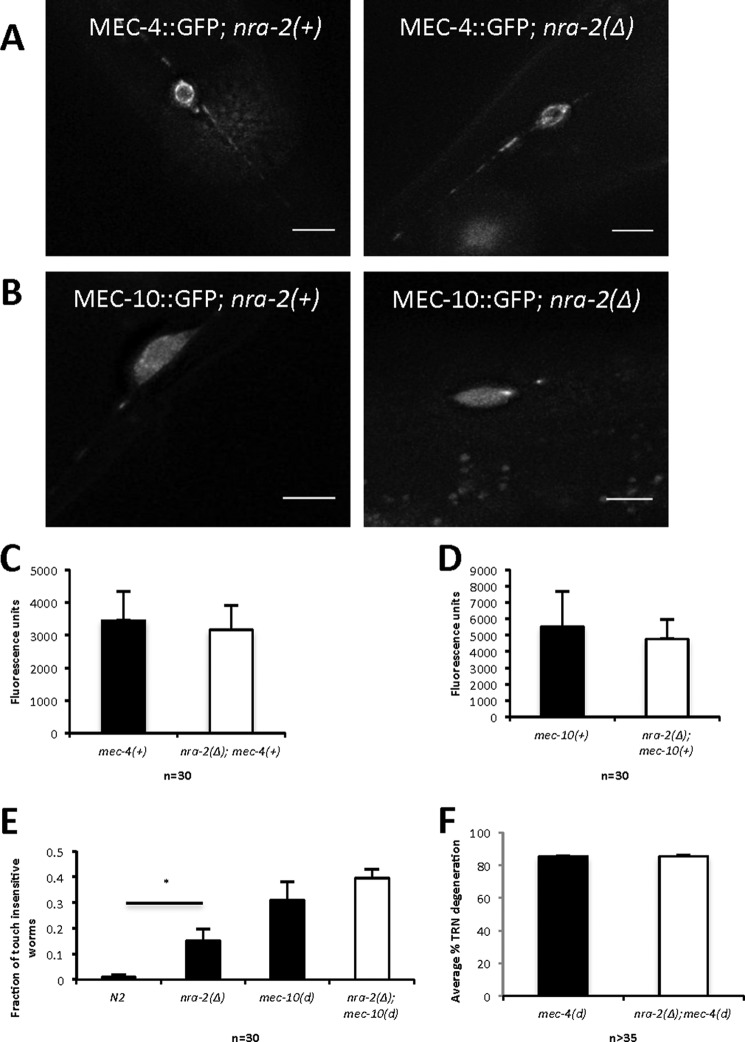FIGURE 2.
nra-2(Δ) does not induce significant changes in MEC-4 and MEC-10 distribution and is associated with a modest change in overall touch sensation. A, MEC-4::GFP (puncta in processes and dispersed in soma) shows similar patterns in wild type and nra-2(Δ) backgrounds. Images are representative of 30 individual cell observations (scale bar = 5 um). B, MEC-10::GFP (soma restriction) shows similar patterns in wild type and nra-2(Δ) backgrounds. Images are representative of 30 individual cell observations (scale bar = 5 μm). C, MEC-4::GFP intensity in soma in wild type and nra-2(Δ) backgrounds, n = 30 for each strain, error bars, S.E. D, MEC-10::GFP intensity in soma in wild type and nra-2(Δ) backgrounds, n = 30 for each strain, error bars, S.E. E, touch sensitivity was recorded as the fraction of nematodes that respond to the first five touches with an eyelash pick. Error bars, S.E. Data are combined for three trials, 30 animals per experiment), ****, p < 0.0001, one-way analysis of variance. F, percentage of TRN necrosis in mec-4(d) versus nra-2(Δ); mec-4(d) is not significantly different. We scored surviving touch neurons by GFP signal; the percentage of degeneration was determined by the formula ((1 − (x/6)) × 100 where x is the number of surviving neurons. Error bars, S.E.; three trials; n > 35 L4 animals.

